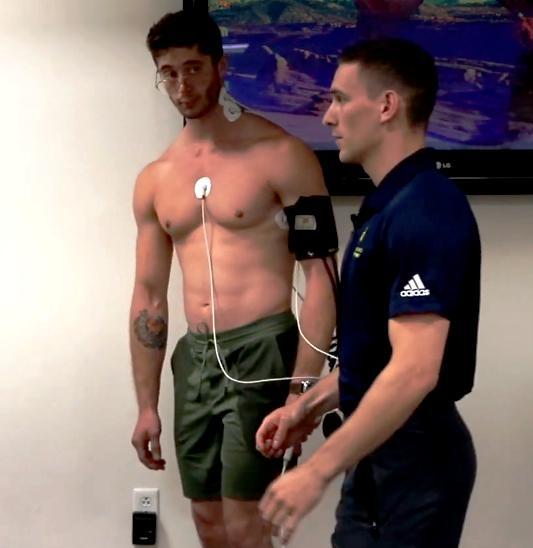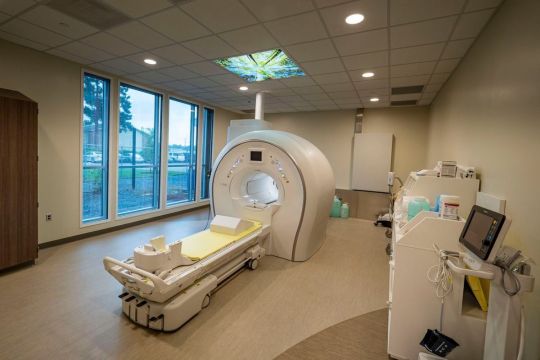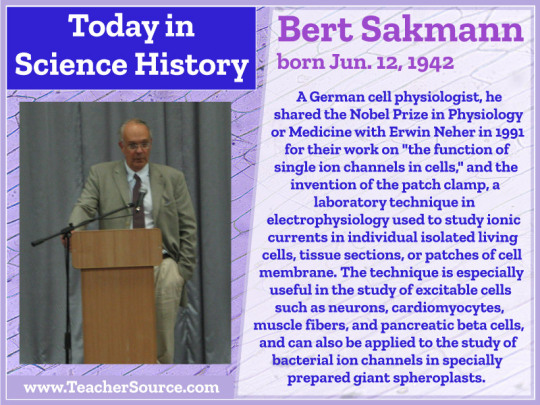#electrophysiology
Text
Embarking on a Scholarly Expedition: Unraveling the Electric Tapestry of the Heart's Symphony ⚡️💓
Greetings, inquisitive minds! Today, I invite you to join me on a deep dive into the intricacies of the heart's electric system – a symphony conducted by an ensemble of specialized cells, choreographing the rhythm of life itself. 📚🔬
1. The Sinoatrial (SA) Node: The Maestro of the Orchestra
Our exploration commences with the illustrious SA node, a cluster of cells nestled elegantly in the right atrium. As the heartbeat's maestro, the SA node plays a pivotal role in initiating the electric impulse. Picture this natural pacemaker as the conductor, setting the tempo for the graceful dance of atrial contraction.
2. Atrioventricular (AV) Node and the Bundle of His: The Harmonious Transition
Moving seamlessly through our cardiac composition, we encounter the AV node – a bridge connecting the atria to the ventricles. This crucial junction ensures a harmonious transition, much like the bridge between movements in a musical masterpiece. Following this, the electric wave traverses the Bundle of His, a specialized pathway conducting the impulse with precision.
3. Ventricular Contraction: The Grand Crescendo
In the grand finale, our symphony reaches its pinnacle as the ventricles contract in orchestrated unison. This powerful crescendo propels blood throughout the circulatory system, marking the culmination of the heart's electric ballet.
As aspiring scholars, let's delve into these references, unraveling the secrets of this physiological masterpiece. Envision the heart's electric symphony, appreciate the precision required for this grand performance, and together, let's celebrate the wonders of medical science! 💡🧠🎓

#science#biology#college#education#school#student#medicine#doctors#health#healthcare#electrophysiology#physiology#nursing
18 notes
·
View notes
Text

the muscle guy is volunteering for some electrode action
58 notes
·
View notes
Video
Light-activated Bacteria
Neuroscientists have had the monopoly on using light-activated proteins to induce electrical impulses in cells. This ability to control cell firing at the flick of a switch has revolutionised research into the brain, but brain cells are not the only electrical cells in nature. It’s understood, for example, that changes in microbial cell electrophysiology regulate all sorts of processes including spore production, biofilm formation and susceptibility to antibiotics. With this in mind, researchers have now adapted tools previously used in neurons for use in bacteria. The bacteria in the video contain such photoswitch proteins and, when exposed to light for 10 seconds (every 10 minutes), become negatively charged (hyperpolarised) – seen as a pulse of blue colour. As a proof-of-concept experiment, these flashing bacteria open the door for research into various aspects of microbial electrophysiology and pave the way for developing synthetic bacteria whose functions can be controlled by light.
Written by Ruth Williams
Video from work by Tailise Carolina De Souza-Guerreiro and colleagues
School of Life Sciences, University of Warwick, Coventry, UK and Center for Nanoscience and Technology, Istituto Italiano di Teconologia, Milano, Italy
Video originally published with a Creative Commons Attribution 4.0 International (CC BY 4.0)
Published in Advanced Science, January 2023
You can also follow BPoD on Instagram, Twitter and Facebook
20 notes
·
View notes
Text
just had my first electrophysiology appointment and they confirmed everything again, started me on meds, AND referred me for testing for a disorder with high comorbidity to mine!!
feeling so so hopeful 🥰
#lexi talks#personal blog#stoner witch#southern witch#pagan witch#witchcraft#paganism#paganblr#queer pagans#pagan#potsie#pots syndrome#electrophysiology#heds#ehlers danlos syndrome#hypermobility
4 notes
·
View notes
Photo

Electro–Physiologie, Figure 64. 1862. Adrien Tournachon
Albumen silver print from glass negative
Metropolitan Museum of Art
“This expression must be that of the damned,” he writes. Indeed, the photograph is a powerfully expressive portrait, one that prompts both horror and pity.
#horror#art#photography#electrophysiology#silver print#body horror#body horror cw#potrait#horror art#electrical stimulation#science experiments#expressive portrait#tournachon#french artist
2 notes
·
View notes
Text
Service Dogs Lead to Fewer Seizures in Resistant Epilepsy
New Post has been published on https://petn.ws/j5cN2
Service Dogs Lead to Fewer Seizures in Resistant Epilepsy
Working with medically trained service dogs is associated with a 31% reduction in seizures compared with usual care in treatment-resistant epilepsya new study showed. Investigators speculate that the dogs may ease participants’ stress, leading to a decrease in seizure frequency, although they note this relationship warrants more study. “Despite the development of numerous antiseizure medications […]
See full article at https://petn.ws/j5cN2
#DogNews #AnxietyDisorder, #Electrophysiology, #Epilepsy, #HealthRelatedQualityOfLife, #Hrqol, #MedicalLife, #MedicalLifestyle, #MedicalStudentLifestyle, #NurseLifestyle, #PhysicianLifestyle, #QOL, #QualityOfLife, #ResidentLifestyle, #SeizureDisorder, #Seizure, #Stress, #WoundCare, #WoundManagement
#anxiety disorder#electrophysiology#epilepsy#health related quality of life#hrqol#medical life#medical lifestyle#medical student lifestyle#nurse lifestyle#physician lifestyle#QOL#quality of life#resident lifestyle#seizure disorder#seizure.#stress#wound care#wound management#Dog News
0 notes
Text
Electrophysiology Market Size, Trends, Revenue Share Analysis, Forecast, 2030
The electrophysiology market refers to the medical field and industry focused on the study and treatment of electrical activities in the body, particularly within the heart and nervous system. Electrophysiology is a branch of physiology that deals with the electrical properties of biological cells and tissues. In the medical context, it primarily involves the diagnosis and treatment of various cardiac arrhythmias, which are irregular heart rhythms.
𝐃𝐨𝐰𝐧𝐥𝐨𝐚𝐝 𝐒𝐚𝐦𝐩𝐥𝐞 𝐑𝐞𝐩𝐨𝐫𝐭 https://www.alliedmarketresearch.com/request-sample/452
Here are some key aspects of the electrophysiology market:
Diagnostic Procedures: Electrophysiology procedures are used to diagnose and locate abnormal electrical activity in the heart or nervous system. These procedures can help identify conditions such as atrial fibrillation, ventricular tachycardia, and epilepsy.
Catheter Ablation: Ablation procedures involve the use of catheters to deliver controlled energy (usually radiofrequency or cryoablation) to destroy or modify abnormal electrical pathways in the heart. This helps in treating arrhythmias and restoring normal heart rhythms.
Device Implantation: The electrophysiology market also includes the implantation of devices like pacemakers, implantable cardioverter-defibrillators (ICDs), and cardiac resynchronization therapy (CRT) devices to manage and regulate heart rhythms.
Technological Advancements: The field of electrophysiology is continually evolving with advancements in technology, such as 3D mapping systems, advanced catheters, and robotic-assisted procedures, making these procedures safer and more effective.
Market Growth: The electrophysiology market has been experiencing steady growth due to the increasing prevalence of cardiovascular diseases and the aging population. There's also a growing demand for minimally invasive procedures, which electrophysiology techniques often provide.
Get Detailed Report https://www.alliedmarketresearch.com/electrophysiology-devices-market
0 notes
Text
#Cardiac Ablation#Minimally Invasive Surgery#Heart Health#Arrhythmia Treatment#Electrophysiology#Heart Rhythm#heart rhythm disorders#Cardiology#Heart Disease#Heart Care
1 note
·
View note
Text
I see what you did there…a (very) brief history of imaging the brain: blood, BOLD and fMRI
A little more #neuro #science #history
This time: functional magnetic resonance imaging #fMRI #BOLD
#scicomm #writing #blogging #neuroscience #brain
For many patients we can discover – or discount – physical causes of neurological problems ‘in real time’ with a range of imaging and other measurement techniques. Neuroimaging techniques are mainly children of the 20th century, and their development is ongoing in the 21st, but their roots stretch back through the 19th century. For example, photography and its ability to reproduce an enduring…

View On WordPress
#Angelo Mosso#CT#EEG#electrophysiology#epilepsy#fMRI#heamodynamics#Keith Thulborn#MEG#MRI#neuroimaging#neurology#neuroskeptic#neurovascular coupling#PET#Peter Bandettini#Seiji Ogawa#xkcd#Your Brain through...History
0 notes
Text

volunteering for electrophysiology experiments.
23 notes
·
View notes
Text
Uh oh! Looks like our friend is here! Everybody say hi to Tight, Squeezing Chest Pain!!!
0 notes
Text
0 notes
Photo

Bert Sakmann was born on June 12, 1942. A German cell physiologist, he shared the Nobel Prize in Physiology or Medicine with Erwin Neher in 1991 for their work on "the function of single ion channels in cells," and the invention of the patch clamp, a laboratory technique in electrophysiology used to study ionic currents in individual isolated living cells, tissue sections, or patches of cell membrane. The technique is especially useful in the study of excitable cells such as neurons, cardiomyocytes, muscle fibers, and pancreatic beta cells, and can also be applied to the study of bacterial ion channels in specially prepared giant spheroplasts.
#bert sakmann#patch clamp#inventors#physiology#electrophysiology#Nobel Prize#nobel prize winners#science#science history#science birthdays#on this day#on this day in science history
0 notes
Text
Mapping the Way to Successful Treatments: Insights from the Electrophysiology Market

The field of electrophysiology (EP) has transformed the landscape of cardiac care, offering innovative approaches to diagnosing and treating various heart rhythm disorders. As technology continues to advance, the ability to map and navigate the intricate electrical pathways of the heart has become increasingly crucial for successful treatments. This article explores the insights gained from the electrophysiology market and how mapping techniques have revolutionized patient outcomes.
Request for Sample PDF: https://www.nextmsc.com/global-electrophysiology-market/request-sample
3D Mapping Systems:
One of the most significant breakthroughs in the EP market is the advent of three-dimensional (3D) mapping systems. These cutting-edge technologies provide detailed, high-resolution visualizations of the heart's electrical activity. By creating a virtual 3D model, EP specialists can precisely locate and understand the source of arrhythmias, guiding them in planning and executing interventions. These mapping systems enable accurate identification of abnormal electrical pathways, resulting in targeted therapies and improved patient outcomes.
Navigation Technologies:
In conjunction with 3D mapping systems, navigation technologies have played a vital role in successful EP treatments. Robotic-assisted catheter navigation systems offer enhanced precision and stability during procedures. These systems use robotic arms to manipulate catheters, enabling precise movements and reducing the risk of complications. By integrating navigation technologies with advanced imaging and mapping systems, EP specialists can navigate complex cardiac anatomies with greater ease and accuracy, resulting in more effective treatments.
Personalized Treatment Strategies:
The insights gained from mapping technologies have revolutionized the approach to treating heart rhythm disorders. By understanding each patient's unique cardiac anatomy and electrical patterns, EP specialists can tailor treatment strategies to their specific needs. Personalized approaches allow for more targeted ablation procedures, reducing the risk of unnecessary damage to healthy tissue while effectively addressing the underlying arrhythmia. This individualized treatment paradigm has significantly improved success rates and minimized procedural risks.
Improved Patient Safety and Outcomes:
Advancements in the electrophysiology market have prioritized patient safety, leading to improved outcomes. Mapping technologies and navigation systems have substantially reduced procedural errors and complications during EP interventions. The ability to accurately identify and navigate the electrical pathways within the heart has minimized the risk of collateral damage and improved overall procedural safety. Consequently, patients experience shorter recovery times, reduced hospital stays, and enhanced quality of life following successful EP treatments.
Enhanced Research and Development:
The insights gained from the electrophysiology market have fueled ongoing research and development efforts. The continuous evolution of mapping technologies, navigation systems, and treatment modalities has opened doors to further innovation in the field. The collaborative efforts of healthcare providers, device manufacturers, and researchers have led to novel approaches for diagnosing and treating cardiac arrhythmias. This focus on research and development ensures that the EP market remains at the forefront of medical technology, driving advancements and improving patient care.
Training and Education:
As the complexity of EP procedures increases, training and education play a critical role in ensuring successful treatments. Healthcare providers must stay updated with the latest technologies and techniques in mapping and navigation. Training programs and educational initiatives are vital for physicians to develop the necessary skills and expertise to effectively utilize these advanced technologies. Continued education and professional development opportunities enable EP specialists to navigate the evolving landscape of cardiac care and provide the highest standard of treatment to their patients.
In conclusion, the electrophysiology market has significantly advanced the field of cardiac care. Mapping technologies, navigation systems, and personalized treatment strategies have revolutionized the way heart rhythm disorders are diagnosed and treated. With continued innovation and a focus on patient safety and outcomes, the EP market will continue to pave the way for successful treatments and improved quality of life for patients with arrhythmias.
#Electrophysiology#CardiacArrhythmias#EPProcedures#Cardiology#MedicalDevices#HeartHealth#AtrialFibrillation#EPTechnologies#InnovationInEP#CardiacMapping#CatheterAblation#ImplantableDevices#RoboticAssistedEP#HealthcareTechnology#EPResearch#MarketTrends#EPMarketGrowth#GlobalEPMarket#EPIndustryInsights
0 notes
Text
0 notes